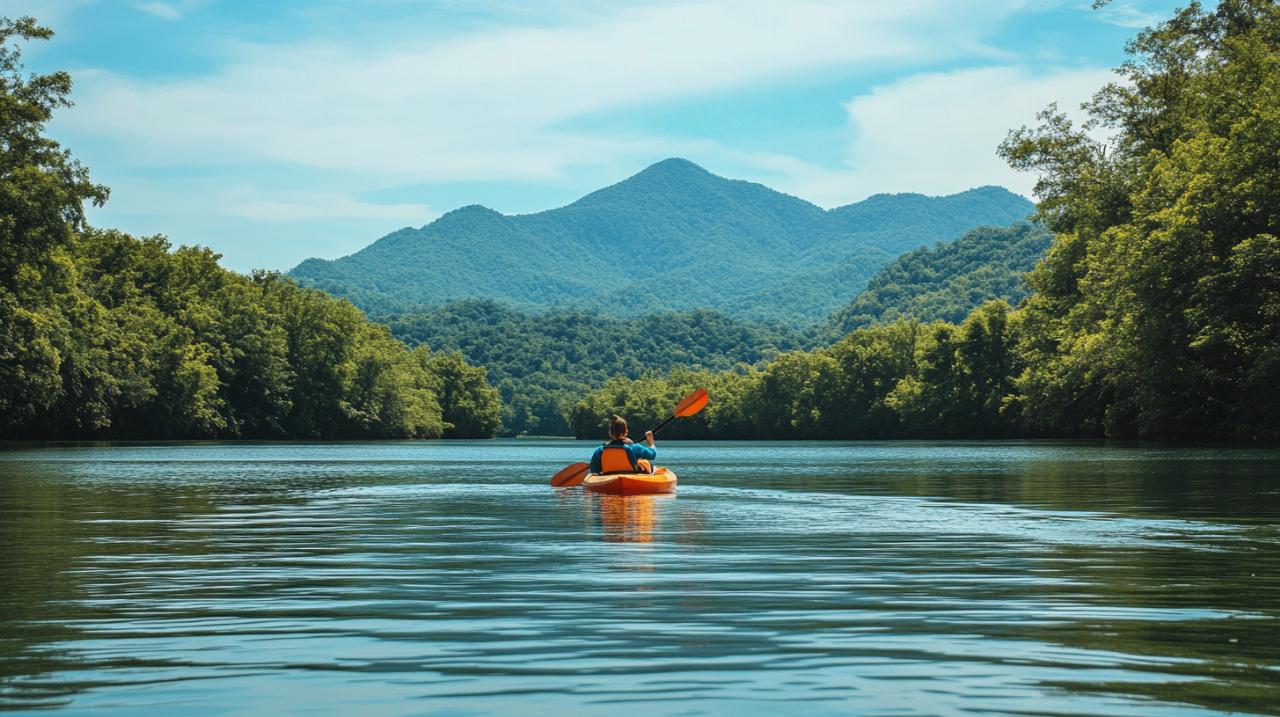Embarking on your first kayaking adventure is an exhilarating experience that combines the thrill of exploration with the serenity of gliding across open water. However, before you slip your kayak into the sea, understanding the ebb and flow of tides is absolutely essential for both your safety and enjoyment. Tides are not merely background details; they are dynamic forces that can transform a leisurely paddle into a challenging ordeal or, conversely, provide a welcome boost to your journey. For beginners, grasping the fundamentals of tidal movement and learning how to read the water will set the foundation for countless memorable outings on the coast.
Understanding Tidal Patterns and Their Impact on Your Kayaking Journey
What Are Tides and Why Do They Matter for Kayakers?
Tides represent the rhythmic rise and fall of the ocean, driven by the gravitational pull of the moon and sun. High tide is the point at which the water reaches its maximum elevation along the shore, whilst low tide marks the moment when the water recedes to its lowest level. These shifts occur roughly twice each day, creating a predictable yet ever-changing environment for those venturing out in a kayak. For paddlers, tides are far more than a simple measurement of water depth; they dictate the accessibility of certain launch sites, influence the strength and direction of currents, and ultimately determine whether your trip will be smooth sailing or a battle against the elements. Spring tides, which occur during full and new moons, bring higher highs and lower lows, accompanied by stronger currents that can test even seasoned kayakers. In contrast, neap tides, which happen during the moon's quarter phases, produce less extreme fluctuations and gentler flows, making them more forgiving for those still building their confidence on the water.
How tidal currents can help or hinder your paddling experience
Tidal currents are the horizontal movement of water caused by the incoming and outgoing tide, and they can significantly alter the effort required to reach your destination. When you paddle with a favourable current, your progress feels almost effortless, as if the sea itself is lending you a helping hand. Conversely, paddling against a strong current can be exhausting and, for beginners, sometimes impossible. These currents typically change direction approximately every six hours, shifting from flood to ebb and back again. Understanding this cycle allows you to plan your departure and return in a way that maximises the assistance of the water rather than fighting it. Beyond the regular tidal flow, you may also encounter ocean currents, such as the Gulf Stream, which provide a steadier push in a consistent direction, and river currents, which naturally flow downstream and can complicate your route if you are paddling near an estuary. Rip currents, though more commonly associated with beach swimming, are another hazard to be aware of. These fast-moving, narrow channels of water flow back out to sea and can be identified by patches of calmer or sandier water amidst breaking waves. Recognising these features and planning your route accordingly will help you avoid unnecessary strain and keep you safe throughout your paddle.
Practical Methods for Checking Tide Times and Conditions
Using Tide Tables and Mobile Apps to Plan Your Trip
Tide charts and books remain invaluable resources for anyone planning a kayaking excursion. These publications provide detailed information on tide times, heights, sunrise and sunset schedules, and moon phases, all of which are critical for plotting a safe and enjoyable journey. Many experienced paddlers still rely on printed tide tables, appreciating the reliability of having a physical reference that does not depend on battery life or signal strength. However, the digital age has brought with it a wealth of mobile applications that offer real-time updates and interactive maps, making it easier than ever to check conditions on the go. These apps often include features such as current speed assessments, weather forecasts, and alerts for spring tides, which can be particularly useful when you are unfamiliar with a new stretch of coastline. When consulting these resources, pay close attention to the speed of the current, as it can dramatically affect your paddling experience. A current of zero to one knot is generally easy to manage, whilst one to two knots will present noticeable resistance. Flows of two to three knots are challenging for beginners and should be approached with caution, and anything above three knots is genuinely difficult, demanding advanced skills and experience. By cross-referencing tide tables with your own fitness level and skill set, you can select the optimal window for launching and ensure that you are working with the water rather than against it.
Observing natural signs and local knowledge before launching
Whilst digital tools and printed charts are essential, there is no substitute for the insights gained from observing the environment and talking to local paddlers. Before you set off, take a moment to study the water's surface for clues about what lies beneath. Eddies, which are circular currents that form behind obstacles such as rocks or headlands, can create swirling patches of calm or turbulence that indicate the presence of strong flows. Whirlpools, though less common, are another sign of powerful tidal movement and should be approached with care. The behaviour of waves can also reveal much about the underlying currents and seabed. If waves are breaking in an unusual pattern or if you notice areas of smoother water amidst choppy conditions, these could be signs of rip currents or other hazards. Local knowledge is invaluable in these situations, as seasoned kayakers and instructors can point out features that might not be immediately obvious to a newcomer. Joining a guided group or speaking with staff at a local hire centre can provide you with practical advice tailored to the specific conditions of the day. Additionally, checking the wind forecast is crucial, as offshore winds can push you out to sea and make it extremely difficult to return to shore. A gentle onshore breeze, on the other hand, can make for a pleasant paddle without posing significant risk. By combining the precision of tide charts with the wisdom gained from observation and conversation, you will develop a more intuitive understanding of the water and build the confidence needed to make sound decisions before you launch.
Safety considerations when kayaking in tidal waters
Recognising Dangerous Conditions and Knowing When to Stay Ashore
 The sea is a dynamic and sometimes unpredictable environment, and even the most carefully planned trip can encounter unexpected challenges. One of the most important skills a beginner can develop is the ability to recognise when conditions are beyond their current skill level and when it is wiser to postpone a paddle rather than risk an incident. Strong tidal currents, particularly those exceeding three knots, can quickly overwhelm a novice paddler, making it difficult to maintain control or return to shore. Similarly, rough sea conditions, characterised by large waves and choppy water, demand a level of stability and technique that takes time to acquire. If the weather forecast predicts strong winds, especially offshore gusts, or if the sea looks rougher than anticipated, it is far better to wait for a calmer day than to venture out unprepared. Rocks and shallow areas pose additional hazards, as collisions can damage your kayak and cause injury. Wearing a helmet is a sensible precaution in rocky environments, as it provides essential protection in the event of a capsize or unexpected impact. It is also worth remembering the advice of experienced paddlers, such as Nigel Dennis, who cautioned that the sea is always worse than it looks from the shore. This perspective encourages a healthy respect for the ocean and reinforces the importance of conservative planning, especially when you are still learning the ropes.
The sea is a dynamic and sometimes unpredictable environment, and even the most carefully planned trip can encounter unexpected challenges. One of the most important skills a beginner can develop is the ability to recognise when conditions are beyond their current skill level and when it is wiser to postpone a paddle rather than risk an incident. Strong tidal currents, particularly those exceeding three knots, can quickly overwhelm a novice paddler, making it difficult to maintain control or return to shore. Similarly, rough sea conditions, characterised by large waves and choppy water, demand a level of stability and technique that takes time to acquire. If the weather forecast predicts strong winds, especially offshore gusts, or if the sea looks rougher than anticipated, it is far better to wait for a calmer day than to venture out unprepared. Rocks and shallow areas pose additional hazards, as collisions can damage your kayak and cause injury. Wearing a helmet is a sensible precaution in rocky environments, as it provides essential protection in the event of a capsize or unexpected impact. It is also worth remembering the advice of experienced paddlers, such as Nigel Dennis, who cautioned that the sea is always worse than it looks from the shore. This perspective encourages a healthy respect for the ocean and reinforces the importance of conservative planning, especially when you are still learning the ropes.
Essential Safety Kit and Communication Devices for Beginners
No matter how confident you feel or how benign the conditions appear, proper safety equipment is non-negotiable when kayaking in tidal waters. A personal flotation device, commonly referred to as a PFD or buoyancy aid, should be worn at all times and fitted correctly to ensure it will support you in the water. A spray skirt is another vital piece of kit, as it keeps water out of the cockpit and helps maintain the kayak's stability in choppy conditions. In cooler waters, a wetsuit provides thermal protection and reduces the risk of hypothermia if you do end up in the water. Layering warm clothing beneath a waterproof jacket is also advisable, as staying dry and warm is crucial for maintaining energy and focus throughout your trip. A first aid kit should be stowed in a watertight compartment, along with a mobile phone sealed in a waterproof case, so that you can call for help if needed. For those venturing further afield or paddling in more remote areas, a personal locator beacon is an invaluable tool that can summon emergency services even when you are out of mobile range. Navigational aids such as a GPS device, compass, and VHF radio enhance your ability to stay on course and communicate with other vessels or shore-based support. Carrying a copy of the tide charts and a basic map of the area will also prove useful if you need to adjust your route or find an alternative landing site. By assembling this safety kit before you set off, you are not only protecting yourself but also demonstrating respect for the power and unpredictability of the sea.
Building confidence: your first paddle in tidal conditions
Choosing the Right Launch Site and Timing for Novice Kayakers
Selecting an appropriate launch site is one of the most important decisions you will make as a beginner. Look for a location with easy access to the water, preferably a gently sloping beach or slipway where you can enter without having to navigate steep rocks or strong surf. Ideally, the site should offer some shelter from prevailing winds and currents, allowing you to practise your strokes and build familiarity with your kayak before venturing into more exposed waters. Timing your departure is equally critical. A general rule for novices is to launch at low tide and plan your return as the tide begins to turn from ebb to flood. This approach ensures that you are paddling out with minimal resistance and can take advantage of the incoming tide to help you back to shore. Early mornings are often the calmest time of day, with lighter winds and fewer other water users, making them an excellent choice for your first outing. Before you push off, take a moment to check that your kayak is properly loaded, with heavier items stowed low and centred to maintain stability. Place the kayak in shallow water, step in carefully, and use your paddle to push off gently. Once you are afloat, lower the rudder or skeg if your kayak is equipped with one, as this will aid your steering and help you maintain a straight course. Remember to face any waves head-on, as this reduces the risk of capsizing and allows you to maintain better control.
Developing Your Paddling Technique to Work with the Water
Mastering the fundamental kayaking strokes is essential for navigating tidal waters with confidence and efficiency. The forward stroke is the backbone of your paddling repertoire, providing the power needed to move through the water. Keep your arms relatively straight and engage your core muscles, rotating your torso with each stroke to generate maximum force without straining your shoulders. The sweep stroke is used to turn the kayak, and it involves a wide, arcing motion that sweeps the paddle from bow to stern. Edging the kayak slightly towards the direction of the turn will enhance its effectiveness and help you spin the boat quickly when needed. The rudder stroke is employed for making subtle adjustments to your course, whilst the draw stroke allows you to move the kayak sideways, which can be useful for repositioning or avoiding obstacles. Practising these techniques on flatwater before venturing into tidal currents will build muscle memory and help you react instinctively when conditions become more challenging. As you gain experience, consider developing a reliable kayak roll, which allows you to right the boat after a capsize without exiting. This skill can be a game-changer in rough conditions and is best learned in a controlled environment with the guidance of an experienced instructor. If you do capsize and are unable to roll, the wet exit is the safest option. Remain calm, release the spray skirt, and push yourself out of the cockpit. Once free, you can flip the kayak upright and use the BBL technique, which stands for belly, bum, and legs, to re-enter by pulling yourself onto the rear deck and swinging your legs back into the cockpit. Practising rescue techniques such as the T-rescue with a partner will further enhance your ability to handle emergencies and build the confidence needed to paddle in a variety of conditions. By combining solid technique with careful planning and respect for the sea, you will find that kayaking becomes not only safer but also far more enjoyable, opening up a world of coastal exploration and adventure.







